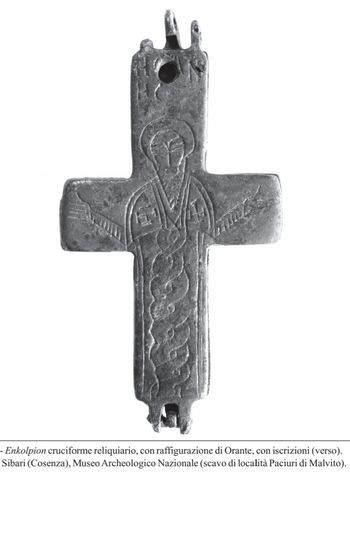Malvito is a small town located in the Esaro valley, in the province of Cosenza. Its territory was the site of stewards, a fortified center in which administrative and military functions were carried out. We find news of it in documents of the X century. As belonging to the patrimonial sphere of the Benedictine Abbey of San Vincenzo sul Volturno and as a suffragan of Salerno by disposition of Pope Benedict VII in 983 AD. c.
An ancient document of 1082/83 shows us a Norman Roberto Conte di Malvito, who makes a donation in favor of Uberto, abbot of the Monastery of Santa Maria di Camigliano, not far from Tarsia. The new Norman rulers began a decisive work of undermining the religious and cultural substratum of Greek Calabria, placing spiritual guides belonging to the Latin Benedictine order; proof of this is the settlement of Santa Maria della Matina for the strategic control of the middle valley of the Crati, to whose endowment the monastery of San Nicola di Donnoso was granted, near Orsomarso, the heart of the Byzantine Mercurion. The territory of Malvito rises in a strategic and connecting point both towards the Ionian Sea, but also a short distance from the Alto Tirreno Cosentino, through ancient roads never abandoned from the Roman era to the whole Middle Ages.
The site of Pauciuri di Malvito is known for the various excavation campaigns started in 1979 by joint Italian-French missions. Various stratifications of settlements have been brought to light over the years, including a large settlement from the Roman era. Rustic residences that become luxurious, equipped with thermal facilities; the whole area develops production systems for the exploitation of the resources of the Esaro valley and of the rich Sibaritide, a rich reservoir from which to draw to increase economic and commercial activities. In a necropolis dating back to the early Middle Ages, in 1989, a tomb was found with the skeletal remains of an interesting character, and a pectoral cross that belonged to him.
The sacred object, made up of two intact bronze valves, has an Orante engraved on the recto side and a patent cross on the front side; the dating is controversial and debated. Observing the symbols, I notice the tunic of the Orante wrapped in a spiral motif, which is linked to Gnosticism, the action of two opposing principles (solve et coagula), the divine breath, like the coils of the serpent propulsive of esoteric knowledge. We find the same motifs in the Templar chapel of Bevignate (PG), the Templar chapel of Montsaunes, and of Dogon in France. The Orante is bearded and nimbate, an inscription at the top Hoan; it is Saint John the Baptist whose cult was already known to the first Christians, to the Cathars, recognized in the role of Melkisedech, the priest and king of the waters, the one who would have opened and completed the way for the Messiah and the Baptism of fire. On the patent cross, we note in the center an alveolus suitable for guarding a relic and decorative motifs of ears of corn, an ancient symbol of rebirth and the eternal cycle of life, used in initiation rituals. I propose a dating referable to the XII century for the symbolic elements present. It appears evident that the character to whom the cross belonged was also initiated according to a mystery ritual, most likely to the Order of Sion. I found an important presence of this ancient Order in Altomonte (territory not far from Malvito) in the figure of Erberto d’Orleans, vicar and executioner of Charles of Anjou, at the same time Doge of the Priory of Sion.

The decomposition of the skeleton of this character suggests a translation of the same from another place; for an overall assessment, a wide-ranging study of the other enkolpias found in Calabria, currently investigated in a summary manner, is needed.
Text and research by Marisa Magurno
Bibliographic note:
Filippo Burgarella, L’eparchia di Mercurio: territorio ed insediamenti, Rivista di studi Bizantini e neo ellenici, vol.19,2002
Alberto Gallo, Architettura fortificata in Calabria: il castello di Malvito, Archivio storico per la Calabria e la Lucania, 1991
Giorgio Leone,Le testimonianze figurative: Gli enkolpia crociferi, Calabria tirrenica dell’ Antichità Atti del Convegno, Rende,2000
Vittorio Giovanni Rizzoni, L’ enkolpion del tesoro di Scicli, Archivum Historicum Mothycense, fascicolo 12, 2006
Giovanni Cristofalo, Il mistero della croce di Pauciuri: sulle tracce dell’ abate Ursus, dell’ Ordine di Sion e dei Templari in Calabria, ed. Dedicaces, 2019
Gastone Breccia, scritture greche documentarie in area calabrese, le pergamene Aldobrandini, Archivio storico per la Calabria e la Lucania, anno 1999
Pino Mollica,Il protoromanico capuano longobardorum, Brescia, 2018
Marco Rigamonti, Rituali e regolamenti del Priorato di Sion, ed. BastogiLibri,2017

